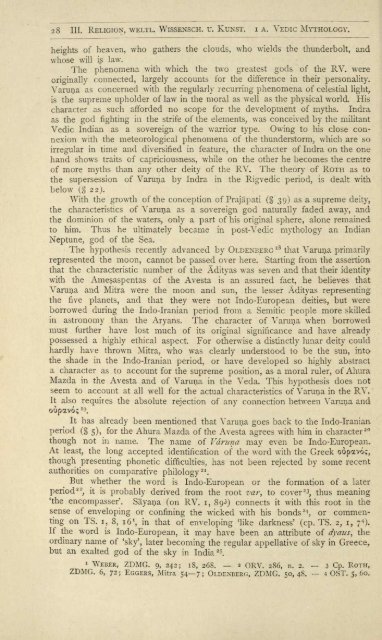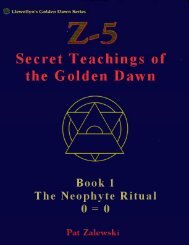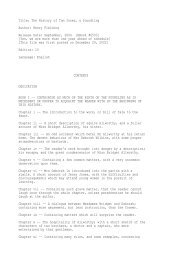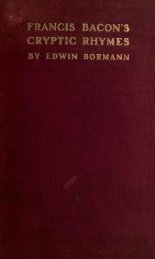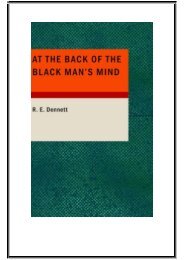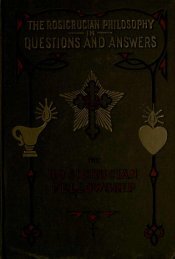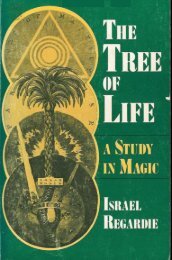download PDF version: 25.9MB - Global Grey
download PDF version: 25.9MB - Global Grey
download PDF version: 25.9MB - Global Grey
You also want an ePaper? Increase the reach of your titles
YUMPU automatically turns print PDFs into web optimized ePapers that Google loves.
28 III. RELIGION, WELTL. WISSENSCH. u. KUNST. i A. VEDIC MYTHOLOGY.<br />
heights of heaven, who gathers the clouds, who wields the thunderbolt, and<br />
whose will is law.<br />
The phenomena with which the two greatest gods<br />
of the RV. were<br />
originally connected, largely accounts for the difference in their personality.<br />
Varuna as concerned with the regularly recurring phenomena of celestial light,<br />
is the supreme upholder of law in the moral as well as the physical world. His<br />
character as such afforded no scope for the development of myths. Indra<br />
as the god fighting in the strife of the Vedic Indian as a<br />
elements, was conceived by the militant<br />
sovereign of the warrior type. Owing to his close con<br />
nexion with the meteorological phenomena of the thunderstorm, which are so<br />
irregular in time and diversified in feature, the character of Indra on the one<br />
hand shows traits of capriciousness, while on the other he becomes the centre<br />
of more myths than any other deity of the RV. The theory of ROTH as to<br />
the supersession of Varuna by Indra in the Rigvedic period, is dealt with<br />
below ( 22).<br />
the<br />
With the growth of the conception of Prajapati ( 39) as a supreme deity,<br />
characteristics of Varuna as a sovereign god naturally faded away, and<br />
the dominion of the waters, only a part of his original sphere, alone remained<br />
to him. Thus he ultimately became in post-Vedic mythology an Indian<br />
Neptune, god<br />
of the Sea.<br />
The hypothesis recently advanced by OLDENBERG IS that Varuna primarily<br />
represented the moon, cannot be passed over here. Starting from the assertion<br />
that the characteristic number of the Adityas was seven and that their identity<br />
with the Amesaspentas of the Avesta is an assured fact, he believes that<br />
Varuna and Mitra were the moon and sun, the lesser Adityas representing<br />
the five planets, and that they were not Indo-European deities, but were<br />
borrowed during the Indo-Iranian period from a Semitic people more skilled<br />
in astronomy than the Aryans. The character of Varuna when borrowed<br />
must further have lost much of its original significance and have already<br />
possessed a highly ethical aspect. For otherwise a distinctly lunar deity could<br />
hardly have thrown Mitra, who was clearly understood to be the sun, into<br />
the shade in the Indo-Iranian period, or have developed so highly abstract<br />
a character as to account for the supreme position, as a moral ruler, of Ahura<br />
Mazda in the Avesta and of Varuna in the Veda. This hypothesis does not<br />
seem to account at all well for the actual characteristics of Varuna in the RV.<br />
It also requires the absolute rejection of any connection between Varuna and<br />
It has already been mentioned that Varuna goes back to the Indo-Iranian<br />
period ( 5), for the Ahura Mazda of the Avesta 20<br />
agrees with him in character<br />
though not in name. The name of Varuna may even be Indo-European.<br />
At least, the long accepted identification of the word with the Greek oopavoc,<br />
though presenting phonetic difficulties, has not been rejected by some recent<br />
authorities on 21<br />
.<br />
comparative philology<br />
But whether the word is Indo-European or the formation of a later<br />
period 22<br />
it is , probably derived from the root var, to cover 23 , thus meaning<br />
the . encompasser Sayana (on RV. i, 89^) connects it with this root in the<br />
sense of enveloping or confining the wicked with his bonds 24 or commen<br />
,<br />
ting on TS. i, 8, i6 x<br />
, in that of enveloping like darkness (cp. TS. 2, i, 7*).<br />
If the word is Indo-European, it may have been an attribute of dyaus, the<br />
ordinary name of sky , later becoming the regular appellative of sky in Greece,<br />
but an exalted god of the sky in India 2 ^.<br />
1 WEBER, ZDMG. 9, 242; 18, 268. 2 QRV. 286, n. 2, 3 Cp. ROTH,<br />
ZDMG. 6, 72; EGGERS, Mitra 547; OLDENBERG, ZDMG. 50,48. -- 4 OST. 5,60,


